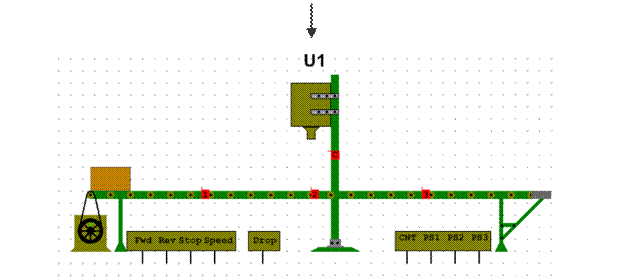METACOGNITIVE MODELING
Metacognitive modeling demonstrates how to think in lessons that focus on interpreting information and data, analyzing statements, and making conclusions about what has been learned. This type of modeling is particularly useful in a math class when teachers go through multiple steps to solve a problem. In this type of modeling teachers talk through their thought process while they do the problem on the board or overhead. “This thinking-out-loud approach, in which the teacher plans and then explicitly articulates the underlying thinking process… should be the focus of teacher talk.”4 This type of modeling can also be done in a reading class while the teacher asks rhetorical questions or makes comments about how to anticipate what is coming next in a story. MODELING AS A SCAFFOLDING TECHNIQUE When using modeling as a scaffolding technique, teachers must consider students’ position in the learning process. Teachers first model the task for students, and then students begin the assigned task and work through the task at their own pace. In order to provide a supportive learning environment for students who have learning disabilities or English language learners, teachers will model the task multiple times.5 STUDENT-CENTERED MODELING Teachers can often call on students to model expected behaviors or thought processes. In student-centered modeling, teachers engage students who have mastered specific concepts or learning outcomes in the task of modeling for their peers. This type of modeling makes the class less “teacher-centered,” which, in some cases, provides a more supportive learning environment for students. Requirements for the preparation of lesson plans. A lesson plan is a teacher's detailed description of the course of instruction for one class. A daily lesson plan is developed by a teacher to guide class instruction. Details will vary depending on the preference of the teacher, subject being covered, and the need and/or curiosity of students. There may be requirements mandated by the school system regarding the plan. A lesson plan is the teacher's guide for running a particular lesson, and it includes the goal (what the students are supposed to learn), how the goal will be reached (the method, procedure) and a way of measuring how well the goal was reached (test, worksheet, homework etc). A successful lesson plan addresses and integrates these three key components: · Objectivesforstudentlearning · Teaching/learningactivities · Strategiestocheckstudentunderstanding Specifying concrete objectives for student learning will help you determine the kinds of teaching and learning activities you will use in class, while those activities will define how you will check whether the learning objectives have been accomplished Levels of planning
Course syllabus Before you can begin to make any detailed plan you need to be familiar with the main goals, general objectives, and content of the syllabus that includes understanding: - What the learners are expected to know and be able to do in English at the beginning, and at the end of the course. - What the roles of grammar, functions, topics and skills are. Some syllabus may give more emphasis to language knowledge and others to communication skills. Syllabus units The unit divisions of a syllabus usually indicate how the content can be grouped together, and how fast the course should move. A unit can have a single theme. Units are also usually related to periods of time. An adequate syllabus allows for the fact that learners will be accumulating knowledge and skills, learning new things without forgetting old ones.
|




